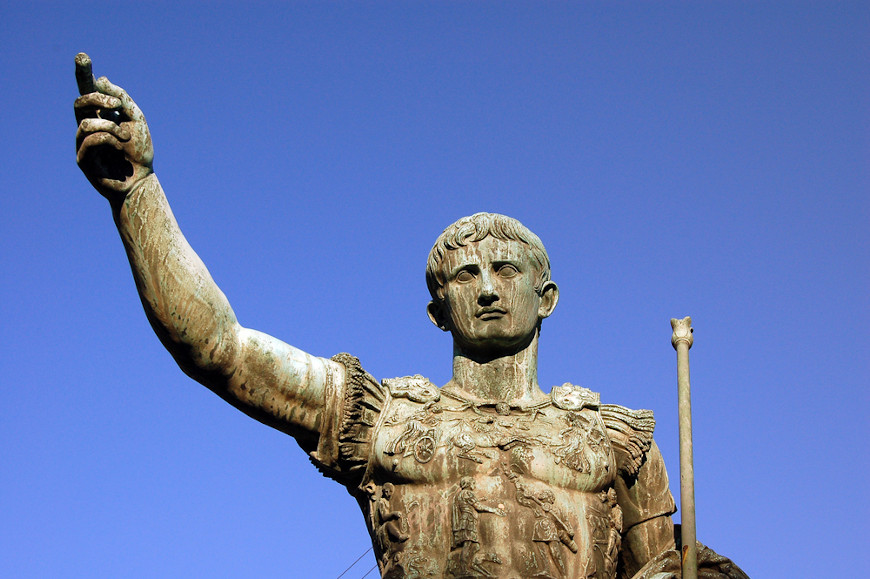
The Library of Alexandria housed the knowledge of Antiquity. There were not only books, but also research centers. The cause of its destruction is not a consensus.
The Library of Alexandria was a work of great magnitude, opened in the 3rd century BC, which not only housed books, but also documents, manuscripts, papyri, laboratories, etc. It was opened in the 3rd century BC by Ptolemy I, successor of Alexander the Great . His legacy is immense, as, for seven centuries, he fostered and sheltered much of the knowledge of Antiquity.
There is no consensus on the cause of its destruction. Some theories talk about fires caused by religious motivations, whether Muslim or Christian, and others about having been a consequence of demonstrations against the presence of Julius Caesar — in persecution of Pompey — in Egypt. In 2002, the New Library of Alexandria was inaugurated, a sumptuous building sponsored by UNESCO and administered by the Egyptian Ministry of Education.
Summary about the Library of Alexandria
- The foundation of the Library of Alexandria took place in the 3rd century BC, under the management of Alexander the Great’s successor, Ptolemy I.
- The operation of the Library of Alexandria was maintained by around 100 employees. It not only housed books and documents, but also laboratories, a zoo, a botanical garden and research centers.
- The cause of the destruction of the Library of Alexandria is not a consensus among historians.
- The importance and legacy of the Library of Alexandria are seen in the fact that many considered it to be the first university in the world, as the model is followed to this day. It also had enormous importance in promoting and sheltering knowledge of the Ancient World.
- The new Alexandria Library was inaugurated in 2002, received funding from UNESCO, took seven years to build and its project is the result of a competition held to choose the best design.
Origin and foundation of the Library of Alexandria
The Library of Alexandria was founded in the 3rd century BC by Alexander the Great’s successor, the Greek king Ptolemy I. The city of Alexandria was founded during the Macedonian Empire, in 331 BC, by Alexander himself, named after himself . The library was one of the largest in the world, and its objective was to preserve culture.
Operation of the Library of Alexandria
The Library of Alexandria was not just a place to store books , as the current concept of this type of institution defines. It also housed a zoo, botanical garden, astronomical observatories, laboratories and handwritten documents from various locations and languages. It was formed through donations, especially from Egyptian kings. In its normal operation, it ended up functioning as a university, due to the number of people who circulated and carried out research there.Don’t stop now… There’s more after the advertising 😉
Decline and destruction of the Library of Alexandria
The long-accepted explanation for the destruction of the Library of Alexandria was that it was destroyed on the orders of Amer ibn Alas of Egypt , in the name of the orthodox caliph Umar, when the Arabs conquered Egypt. According to the order, all sources and books that contradicted the Quran were to be destroyed .
Another explanation that has also gained followers over time is that, with the hegemony of the Catholic Church, Christians invaded and burned books and everything that did not agree with their dogmas.
However, this event divides the opinions of historians , as some credit Julius Caesar with his destruction, which occurred during a period in which he went to Egypt, met Cleopatra and was already in crisis with Pompey, pursuing him there after his death. of Crassus and the end of the Triumvirate. He was supposedly surrounded by people who set fire to his things (including ships), and the fire spread to the library.

Ruins of the Library of Alexandria
The ruins of the Library of Alexandria no longer exist . Part of its collection can be seen in the ruins of the Temple of Serapis, where they were kept.
Importance and legacy of the Library of Alexandria
Due to the number of buildings and research that was carried out within the Library of Alexandria, it was considered by many to be the first university in the world . Furthermore, for seven centuries it housed the largest scientific and cultural collection in Antiquity. The first medical school in the world operated on its premises, and the model of universities we have today was inspired by what the Library of Alexandria was.
New Library of Alexandria
In 2002, the New Library of Alexandria was opened in Egypt. The work took seven years to complete and was designed by Norwegian architects who won a competition held around the world to select the design. The building, in contemporary architecture, has 80 thousand m², 11 floors and can house 4 to 8 million books. It is administered by the Egyptian Ministry of Education and is located in the historic center of the city of Alexandria, next to the old port. Contains very rare works in different languages.
![Facade of the current Library of Alexandria, Egypt. [1]](https://static.historiadomundo.com.br/2022/10/biblioteca-alexandria-atual.jpg)
Curiosities about the Library of Alexandria
- In addition to the books and research centers already mentioned, the Library of Alexandria contained resting places.
- It is likely that more than 100 employees worked there.
- In papyrus alone, it is estimated that she had around half a million units.
- These papyri and manuscripts fulfilled one of the library’s objectives: to obtain a copy from each of the world’s peoples.
- Its recent reconstruction was mostly paid for by UNESCO and cost around 212 million dollars.